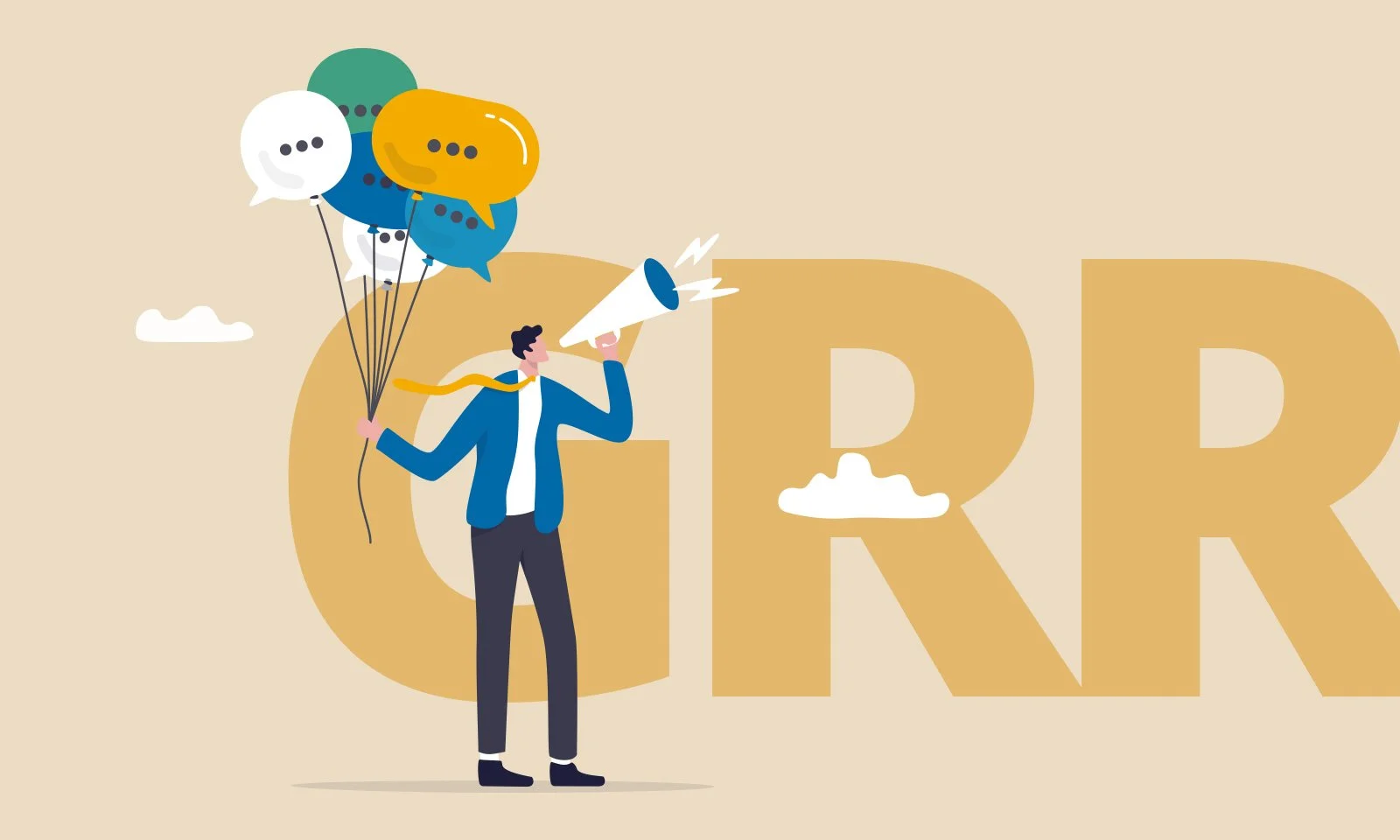The OG of Retention Metrics: Why GRR Still Matters
Harp Dhaliwal is VP of Growth at Ibbaka. See his LinkedIn Profile.
Surveys discussing and dissecting SaaS Net Revenue retention (NRR) seem to be everywhere these days, and rightly so, as growth from the install base is critical in the current market. However, in this discussion, we seem to have lost sight of Gross Retention (GRR) aka good old logo churn or the original retention metric!
In the current SaaS market where new customer acquisition is harder and takes longer than ever and where efficiency and profitability are paramount GRR is more important than ever and should be near the top of your metrics dashboard.
A Tale of Two Metrics
Gross Revenue Retention (GRR) measures the percentage of recurring revenue retained from existing customers in a specific period, excluding any upsells or cross-sells. It focuses purely on the revenue you keep by maintaining your existing customer base, not accounting for any expansion revenue. A high GRR rate indicates strong customer satisfaction and product-market fit, showing that customers continue to derive value from the product.
Net Revenue Retention (NRR), on the other hand, includes revenue from upsells, cross-sells, and any other sales you can think of but also accounts for churns and contractions. It provides a comprehensive composite view of revenue changes within your current customer base. NRR can exceed 100%, indicating that revenue from existing customers is growing, which is a strong signal of a healthy, expanding business.
Why GRR Matters…a lot
It somewhat depends on your model and market, but for Enterprise B2B SaaS, 90% GRR is the target. Workday hit around 95%; get there, and you are world-class.
Strategies to Improve GRR
Focus on Customer Value
The main reasons customers churn are due to a lack of value that they are realizing, whether true or perceived. In either case, engage at a customer level with a value-based approach:
Value-Based Engagement: Arm customer success managers with the tools and data to have structured conversations around the value customers are receiving.
Value Realization Plans: Work with customers to develop and execute value plans that align the product's capabilities with their business goals, ensuring they continually maximize value. Move beyond base metrics like active users to outcomes.
Gather and Act on Voice of Customer: Implement systematic ways to collect and analyze customer feedback. Use this insight to drive product improvements, address pain points, and validate that your product continues to meet evolving customer needs.
2. Make Your Product Better
It’s a straightforward answer but an essential one, as GRR is a measure of how effectively you meet customer needs and use cases. If you improve that relative to the competition and support evolving customer needs, your GRR will increase. Specifically:
Innovate Based on Voice of Customer: Use customer feedback to guide product development, ensuring new features and improvements align with customer needs.
Market Alignment: Regularly review market trends and competitor offerings to ensure your product remains competitive and offers compelling value.
3. Assess Pricing and Packaging
Analyzing how you price and package your offerings is a critical action in improving GRR. You need to analyze data to see if you have a segment or cohort of your customers whose needs have changed, assess competitor actions and the changing needs of customers, and ensure that pricing and packaging align with all these. Specifically:
Pricing Strategy: Ensure your overall pricing strategy aligns with the perceived value of the SaaS offering. Overpricing can lead to customer churn, whereas underpricing affects profitability and sustainability.
Consider Value-Based Pricing: Align your pricing structure with the value customers derive from your product. This can involve customer segmentation and usage factors.
Packaging Options: Well-designed packages that cater to different customer segments' needs and use cases can significantly enhance customer satisfaction and improve GRR. If customers find a package that closely matches their needs, they're more likely to feel satisfied and continue their subscription.
In Conclusion
While it might not grab the headlines like a 150% NRR, a healthy, growing GRR is an equally critical foundation for long-term, sustainable growth. We recommend tracking this metric religiously, including it as one of your key KPIs, and making appropriate investments to improve your gross retention over time.
PeakSpan Master Class: Optimize Pricing & Packaging to Minimize Churn led by Steven Forth & Karen Chiang
In this session, Karen and Steven will be discussing how you can leverage intelligent pricing and packaging to minimize churn (optimize gross-dollar retention or “GRR”).
When: Wednesday, March 27th @ 8.30AM PST / 11.30AM EST
Read other posts on Customer Retention, NDR / NRR
What is driving your Net Revenue Retention (NRR)? Poll Results
Register for the March 27th PeakSpan Master Class: Optimize Pricing & Packaging to Minimize Churn
Questions (and answers) from the PeakSpan Ibbaka webinar on Net Revenue Retention
Pricing and NRR: Five Questions About The PeakSpan Ibbaka NRR Survey Results
Net Revenue Retention - Unlocking the Secrets to SaaS Success



